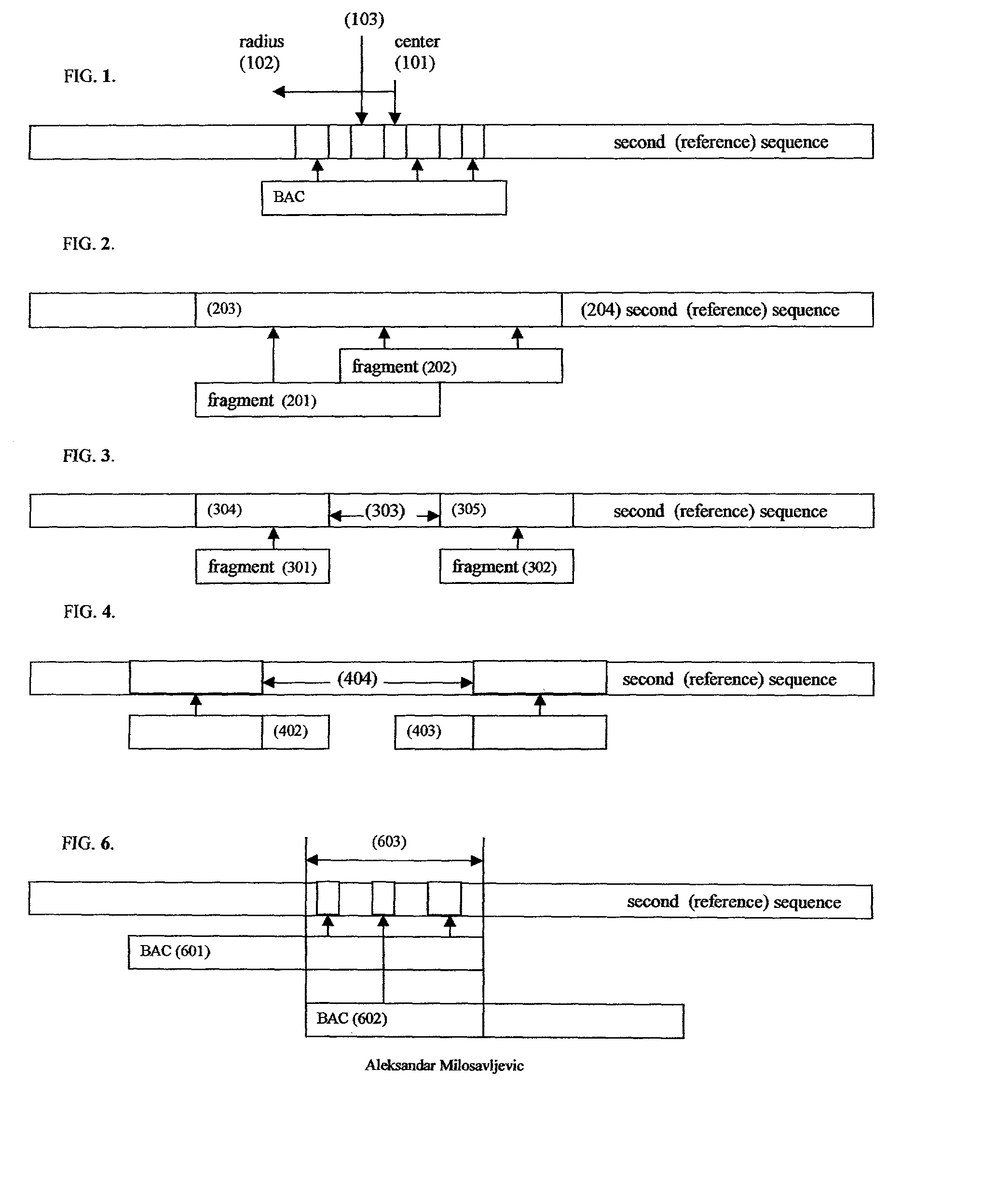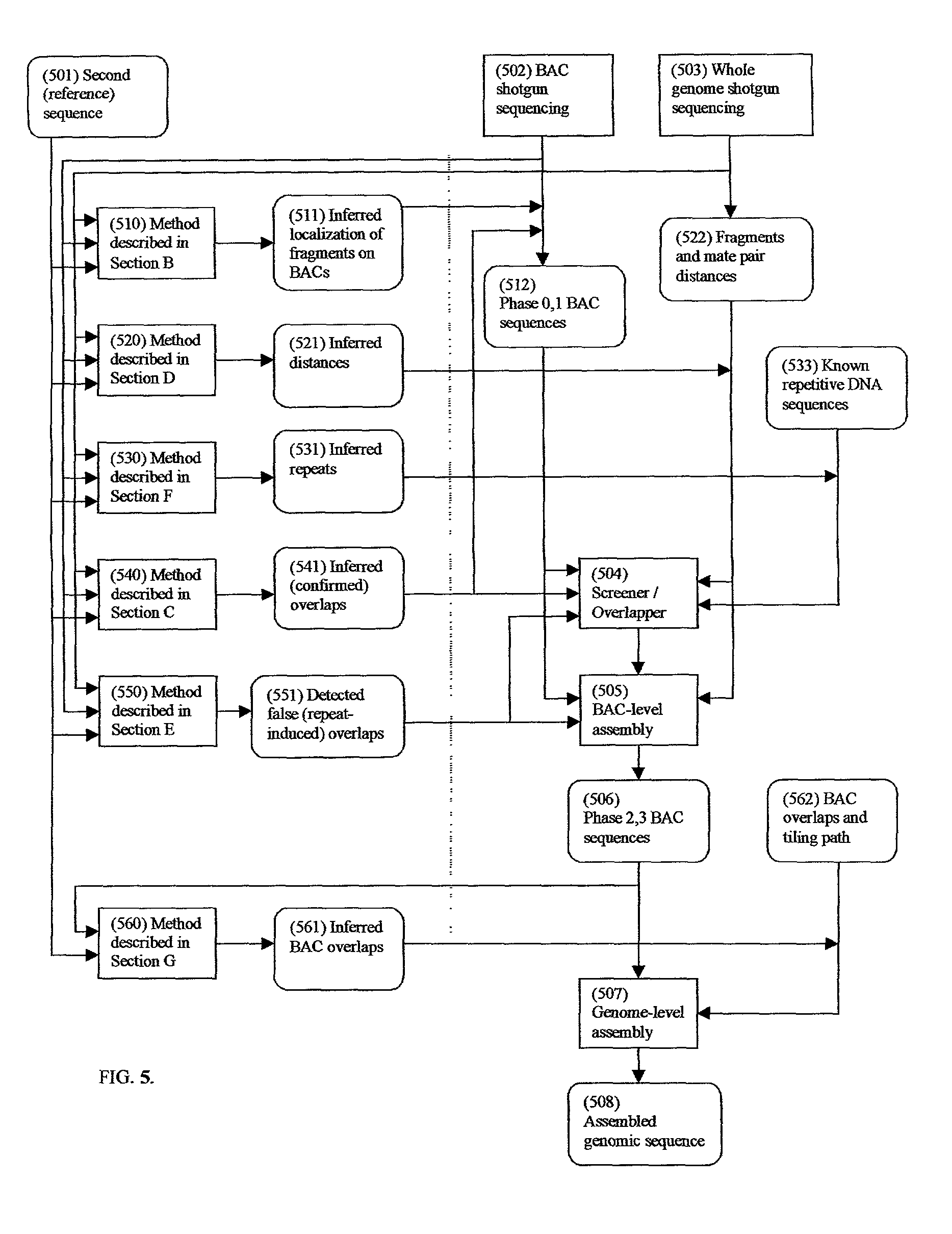Comparative mapping and assembly of nucleic acid sequences
a nucleic acid sequence and sequence technology, applied in the field of nucleic acid sequence determination, can solve the problems of inability to accurately large number of spurious matches or undetected matches between fragments, and inability to accurately identify the two situations. the current available method does not correctly discriminate between the two situations, so as to improve accuracy or completeness
- Summary
- Abstract
- Description
- Claims
- Application Information
AI Technical Summary
Benefits of technology
Problems solved by technology
Method used
Image
Examples
Embodiment Construction
[0044]The term “genome deciphering” has often been used to summarize newly completed DNA sequencing projects. However, the true deciphering will require the development of an understanding of the function of DNA sequence, an effort that will take decades. To decipher biological function of DNA sequence, a number of approaches are currently pursued. The most powerful of them involves yet more DNA comparative sequencing of related species (ref. 25):
[0045]“Probably the most powerful tool to identify the coding exons, as well as the regulatory regions, is a comparison of the sequence across different genomes For that purpose, full-scale sequencing of the laboratory mouse genome already has been initiated, and the sequencing of the rat and zebrafish genomes will not be far behind. In both the public and private sectors, serious consideration is being given to the sequencing of other large vertebrate genomes, including the pig, dog, cow, and chimpanzee . . . . ”
[0046]The more similar the ...
PUM
| Property | Measurement | Unit |
|---|---|---|
| threshold | aaaaa | aaaaa |
| distance | aaaaa | aaaaa |
| distances | aaaaa | aaaaa |
Abstract
Description
Claims
Application Information
 Login to View More
Login to View More - R&D
- Intellectual Property
- Life Sciences
- Materials
- Tech Scout
- Unparalleled Data Quality
- Higher Quality Content
- 60% Fewer Hallucinations
Browse by: Latest US Patents, China's latest patents, Technical Efficacy Thesaurus, Application Domain, Technology Topic, Popular Technical Reports.
© 2025 PatSnap. All rights reserved.Legal|Privacy policy|Modern Slavery Act Transparency Statement|Sitemap|About US| Contact US: help@patsnap.com


